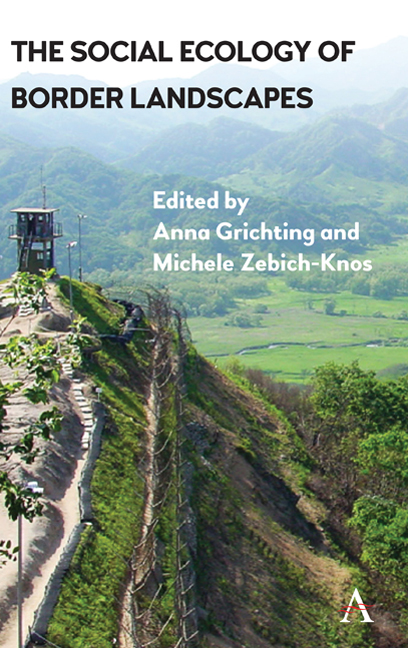Book contents
- Frontmatter
- Contents
- List of Illustrations
- Preface
- List of Contributors
- Introduction: Social Ecologies and Borderlands
- Part I FRAMES: MAPPING SOCIAL ECOLOGIES IN BORDER TERRITORIES
- Part II BRIDGES: RESILIENCE, RESTORATION AND RECLAMATION
- Part III CORRIDORS: CATALYSTS AND COLLABORATION IN CONFINED SPACES
- Part IV PORTALS: DIALOGUE, EXCEPTION AND RETERRITORIALIZATION
- Conclusion: Making Sense of Social Ecology, Borders and the Environment
- Index
Introduction: Social Ecologies and Borderlands
Published online by Cambridge University Press: 10 January 2018
- Frontmatter
- Contents
- List of Illustrations
- Preface
- List of Contributors
- Introduction: Social Ecologies and Borderlands
- Part I FRAMES: MAPPING SOCIAL ECOLOGIES IN BORDER TERRITORIES
- Part II BRIDGES: RESILIENCE, RESTORATION AND RECLAMATION
- Part III CORRIDORS: CATALYSTS AND COLLABORATION IN CONFINED SPACES
- Part IV PORTALS: DIALOGUE, EXCEPTION AND RETERRITORIALIZATION
- Conclusion: Making Sense of Social Ecology, Borders and the Environment
- Index
Summary
There is something infinitely healing in the repeated refrains of nature — the assurance that dawn comes after night, and spring after the winter.
— Rachel Carson, The Sense of WonderEven in the most stressed border areas, humans can find solace and comfort in what nature offers us. While we, as scholars, methodically define and conceptualize our thoughts and research in dispassionate ways, those caught in the thick of conflict/ post-conflict border spaces often abandon such pretentions to savor nature and grasp the small pleasures that make life bearable. Healing power manifests itself in the form of gardens for Palestinian refugees in the Shu'fat Refugee Camp along the Israeli wall, or in swatches of land along the former Iron Curtain that gave way to the Pan European Green Belt open for everyone to enjoy. When nature is in short supply, especially in compact refugee camps like Shu'fat, local residents find other ways to add meaning to their lives. The “Palace,” or Shu'fat marriage hall, enriches camp life and also serves as a multipurpose location for shows and other ceremonies. And, when encountering not a physical border, but a cognitive one, allegories, replete with birds and waterways, sustain hope and comfort as they blend into Australia's Aboriginal storytelling.
In my travels and research along conflict borders, the most telling was that visionary and practical plans for the future transformation of these liminal spaces were seeded and imagined by nature lovers, environmental nongovernmental organizations (NGOs) and passionate planners. Through direct interaction with nature and ecosystems, and with the intention of softening these hard borders, projects and visions such as the German Green Belt, the Korean DMZ Peace Park, the Cyprus GreenLine Scapes Laboratory and the Balkans Peace Park Initiative were born. It is the intent of this book to show how ecologically based, mutualistic social structures can overcome borders and barriers, and create resilient spaces and communities. Increased securitization of borders since 9/ 11 has amplified interest in finding ways to soften borders and to avoid the kind of discrimination, marginalization and other negative consequences that come from inscribing hard divisions between peoples, ecologies and societies.
- Type
- Chapter
- Information
- The Social Ecology of Border Landscapes , pp. 1 - 16Publisher: Anthem PressPrint publication year: 2017

